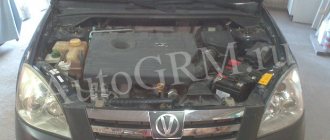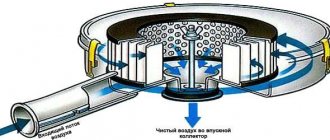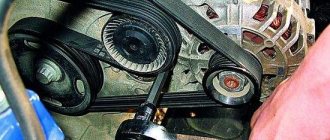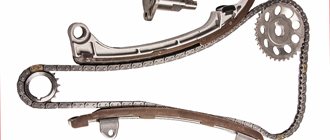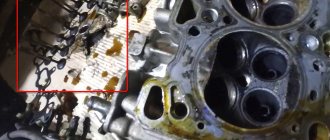Timing belt replacement intervals.
The timing belt in a car engine is for every driver the most important point in the maintenance of their car. What happens when this component in a car breaks? How often should this belt be changed? Is it difficult to replace the timing belt yourself? You friends will get answers to these and other questions in our published material today.
What is a Timing Belt?
This timing belt is a serpentine belt (a belt with special profiles that transmits much more torque than a flat belt drive) that is placed on one side of the engine in a pulley of a specific configuration so that the camshaft and crankshaft operate synchronously. In simple terms, we can say that the timing belt ensures synchronization of the operation of the upper part of the engine (cylinder head, valves) with the lower part of the power unit (crankcase, pistons). Thanks to this belt, the gas distribution mechanism works synchronously in the engines.
Consequences of a broken timing belt
For gasoline engines, the following consequences may occur after a belt breaks:
- Failure of all motor elements.
- The gas distribution mechanism may not even be suitable for repair. This can be caused by a strong impact of the pistons, after which the timing head is deformed.
- Damage to the cylinder block. Piston rings that have become unusable damage the mirror surface of the combustion chamber.
In diesel engines, a broken timing belt often leads to the following consequences:
- damage to camshaft bearings;
- deformation of piston connecting rods;
- broken intake valves.
The “Car Program” channel filmed the consequences of a broken timing belt.
Does my car have a timing belt?
If your car was manufactured 10 -15 years ago, then its engine is probably equipped with a timing belt. Many automakers currently also use this same belt in the engine timing mechanism. For example, it continues to install timing belts on many of its cars. True, it should be noted here that many automobile companies have already refused to equip their new cars with such a timing belt. Instead, in some and even many car models, automakers began to use just a chain, which is much more durable than this belt. To find out for yourself whether your car has a timing belt, you need to refer to the vehicle’s operating manual or study in detail the schedule of scheduled maintenance of your car.
If you do not have such documentation, then ask this question to an online forum (club), where the owners of the same (as yours) car model will tell you whether a timing belt is installed on your power unit. Also, at the end of our article, you can familiarize yourself in detail with the list of cars (by brand) in which a timing belt is installed, and at the same time you can find out for yourself about the schedule recommended by manufacturers for replacing this belt. You can also find out what can happen if the timing belt in your car suddenly breaks?
How the timing belt works
With the help of this part, the crankshaft works synchronously with the camshaft. Without a timing belt, fuel will not reach the engine cylinders in a timely manner. Thus, without the smooth functioning of this timing element, normal operation of the engine and the entire car as a whole is impossible.
In addition to the camshaft and crankshaft, this part of the gas distribution mechanism starts the water pump, which helps the antifreeze circulate in the cooling system. Accordingly, it is a valuable element, and it should be remembered that its normal functioning is very important.
But where is this part located? As a rule, the location is standard regardless of the car brand. The timing belt is located between the radiator and the engine cylinder block, that is, in the front part under the hood. The only thing is that in some cars this auto part is visible immediately after opening the hood, while in other models the element is hidden.
Each car has its own types of timing belts, and if you decide to change it after the required number of kilometers, look for a model that matches your make of car. The required element of the gas distribution mechanism is made of rubber and looks like a closed toothed ring (the teeth are located inside).
What are the consequences if the timing belt breaks?
This depends on the type of gas distribution mechanism configuration used in your car model.
There are two types of mechanism used in engines today. In the first type of configuration, the timing belt ensures that the engine's valves and pistons operate in sync, and does so in such a way that they do not meet each other inside the combustion chamber of the engine block. At its core, a timing belt prevents valves and pistons from being damaged by colliding with each other. By adjusting the operation of the gas distribution mechanism, the valves are lowered into the combustion chamber at the same time that the piston stroke is directed in the opposite direction. That is, they usually work at different times. If the timing belt breaks, the timing of the valves and pistons will be lost, causing the valves to bend against the pistons. Also, as a result of such a break (timing belt), the camshaft, pistons and cylinder walls can be damaged.
Although it is also possible that a break may not lead to damage to the motor itself, if this break occurs at that moment (at a certain point) when the pistons and valves are at the maximum distance from each other.
With the second type of mechanism used, the valve and piston do not meet each other, even if the timing belt breaks. As a rule, the cylinders in such engines have much more space, which allows these valves and pistons to not interfere with each other during operation. So friends, please note that if the car uses a similar type of engine, then if the timing belt breaks, the valves, piston, camshaft and many other engine mechanisms will not be damaged. In this case, you will need to take your car to a car service center to replace the broken timing belt with a new one.
To find out for yourself what type of mechanism is used in your engine, go to the end of our article for a detailed list of many car brands and engine versions, from which you can find out about the interval for replacing the timing belt on your car, and at the same time clarify for yourself whether engine damage occurs if the belt on your car breaks.
Signs that it's time to change the timing belt
Here are the most common signs that it is time to change the timing belt:
- The item is already very old.
How much mileage the car has accumulated determines when it is time to change parts. As a rule, to the question of how many kilometers to change the timing belt, there is a standard answer - after several tens of thousands of km. But there are nuances: you need to take into account the age of this engine element. The timing belt serves well for five years, after which it begins to slowly wear out - regardless of how much mileage has accumulated. Unfortunately, the rubber from which this part is made is subject to rapid aging and cracking.So if you don't use your car often, don't forget that mileage is not the only thing that affects the quality of a car part. Also pay close attention to this issue if you purchased a used car. There is always the possibility that the previous owner was not attentive enough to maintenance.
- The engine starts hesitantly and the power has decreased.
When this element is completely worn out or is not tensioned tightly enough, several teeth may be missed during rotation. Because of this, the normal operation of the ignition will be disrupted - the combustible mixture will begin to ignite at the wrong time. Uncertain engine starting, noticeable vibration and lack of traction are signs of just such a breakdown. If this happens, the normal operation of the car is disrupted, which puts stress on other parts and can lead to new malfunctions. - The exhaust pipe smokes heavily.
The catalyst melts and breaks because the substance in the engine is not completely burned. Part of the combustible mixture enters the exhaust system with the help of valves, which causes the maximum permissible temperature to increase, the honeycombs to sinter, and a breakdown to occur.Assess the condition of the exhaust smoke. The chimney may produce black smoke or simply make popping sounds. This happens because the fuel is over-rich and is not burned completely. There is a possibility that the cause is a faulty timing belt, and it’s time to change it.
- The motor makes a ticking noise.
Over time, the rubber element of the gas distribution mechanism wears out, delaminates, and becomes cracked. Because of this, various suspicious sounds arise - the engine ticks, clicks, “coughs”. Such sounds come from under the protective covers and occur systematically as the engine speed increases. The faster the engine rotates, the more frequent the sounds are heard. Perhaps the water pump has deteriorated, or a bearing is stuck somewhere. However, it is best to determine the cause of the unusual sounds as soon as possible so that you can understand what is going on and whether it is time to change the timing belt. - Drips are visible in the timing drive area.
In this case, it is necessary to disassemble and replace this element of the gas distribution mechanism. If oil or other liquid is leaking somewhere in the drive area, then the belt, regardless of the number of kilometers driven, will wear out much faster than usual, and the likelihood that it will jump on the pulleys will also increase. Of course, this also means trouble with the parts of the engine that are leaking from. - The belt is frayed and cracked.
This is a very clear sign of trouble to come. If your car model has the opportunity to properly examine the above-mentioned timing element, put the car in gear, remove the spark plugs, hang one wheel and manually, slowly, rotate the crankshaft to carefully assess the condition of the part. If you see cracks or other signs of wear, install a new part as soon as possible.Remember that domestic auto parts stores often sell fakes that are subject to rapid wear. Increase control over your car's auto parts.
- The engine refuses to start, the starter is idling.
This is perhaps the most serious problem. If you did not promptly replace a worn timing belt and it breaks, it will be immediately visible. In such a situation, the starter works very vigorously, but cranks at idle. The fuel in the cylinders is not picked up and ignited. After connecting to the pistons, the valves bend and compression does not appear. Unfortunately, now the only thing left to do is throw out the motor and replace it with a new one. Of course, you can try to fix it at a car repair shop, but this will most likely be very expensive, and the price is comparable to buying a new engine.
We recommend
“Diesel engine timing belt: features of operation and replacement” Read more
This is interesting: What types of injection pumps are there?
How much will it cost to replace a timing belt?
The work of replacing the timing belt on some types of cars can cost a large tidy sum, which can reach up to 35,000 thousand rubles or more. In most cars, the cost of replacing a belt starts from approximately 4,000 - 4,500 thousand rubles. On average, such work to replace the belt + the cost of spare parts will cost you approximately 6,500 - 10,000 thousand rubles.
If you can do it yourself and change the timing belt, then you will save yourself quite a small amount of money on this.
Pad
A high-quality KK gasket is not only belt protection, but also a guarantee of cleanliness under the hood of the car. Some consider the gasket to be an insignificant element that cannot seriously affect the performance of the engine, but this is only partly true. As was written above, a faulty gasket means the passage of oil fluid, which inevitably leads to failure of various elements, especially belts, and negatively affects the dynamics of the power unit - oil comes out.
Valve cover gasket
A dry and clean engine is always good; it indicates care for your 4-wheeled friend and indicates the normal condition of all cuffs and seals.
After opening the hood, the first thing that catches your eye is the valve cover. The latter closes the GDS mechanism and is equipped with a neck for pouring lubricant into the motor.
The cover is fixed to the head itself with bolts or nuts, and there must be a sealing gasket between them.
Note. The gasket is made of a special rubber composition that can maintain its properties when exposed to different temperatures. Also, the rubber must be of such a quality that it can withstand constant interaction with oil.
Over time, under regular interaction with the phenomena described above, the gasket inevitably becomes unusable. It loses its elasticity, becomes hard, and small cracks appear on it through which oil can leak.
Note. You should know that even a minor leak can lead to the outside of the engine being coated with a layer of oil and dirt.
Replacing the gasket, as was written above, is carried out simultaneously with replacing the timing belt. In addition, this replacement is carried out if the driver notices that the seal is leaking. And in this case, the caring owner will also change the timing belt, since there is a possibility that oil has gotten on it. It turns out that both elements - the timing belt and the gasket - must be replaced at the same time.
How to install a gasket on a sealant
The gasket can be easily changed independently if you have a set of simple tools. You also need to buy a good high-temperature sealant and any degreaser.
Removing the gasket does not promise anything difficult:
- First, the air intake housing is dismantled.
- The fixing bolts are turned out around the entire perimeter.
- Attachments are removed (if the cover is burdened with additional devices).
- The old gasket is dismantled and thrown away.
- The place where the new gasket will fit must be carefully processed and cleaned.
- The gasket must be put in place using sealant.
When replacing the gasket, errors may occur that you need to be aware of:
- The owner bought a low-quality seal, as a result of which the lubricant leak not only did not stop, but even intensified.
- The sealant was applied unevenly or the composition itself was old.
- The cover bolts are not tightened evenly, which means the cover is skewed.
How long does a timing belt last?
In most foreign-made cars, the average timing belt service life is somewhere between 70 and 100 thousand km. True, it is worth noting here that in many imported cars produced in Russia, the average timing belt service life is approximately 50 - 60 thousand km. In domestic brands of cars, this timing belt service life is even shorter (40 - 50 thousand km).
As a rule, all car manufacturers indicate the recommended intervals for replacing the timing belt in the car's passport or service book.
To our regret, many automobile companies do not indicate, along with the recommended timing for replacing the timing belt, what type of mechanism is used in the engine. This information would help many drivers find out what the risk of a broken belt in the car they are currently driving will be.
Fortunately for you and me, such information is not secret today. Our online publication 1GAI.RU invites friends to find out a list of brands and modifications of power units that use a timing belt in their gas distribution mechanism. You will also be able to find out for yourself about the average service life of a given belt and about the consequences that may threaten your engine modification in the event of a timing belt break.
Attention!!! If your type of engine uses a gas distribution mechanism that will not fail if the timing belt breaks (the valves and pistons do not meet each other in the event of a broken belt), then the belt must still be replaced within the period recommended by the vehicle manufacturer, since in the event such a cliff you will not be able to operate your vehicle. In order not to accidentally find yourself in a difficult situation (for example, far from home or far from the nearest car service station), have your friends schedule a scheduled replacement of the timing belt and other car components on time.
After how many kilometers should the timing belt be changed?
Unfortunately, it is impossible to calculate up to a kilometer and say exactly how long the timing belt will last. This especially applies to non-original spare parts. We do not recommend installing “non-original” parts on the car, this is fraught with troubles.
To roughly determine how many kilometers to change the timing belt, first of all remember how you operate your car. The timing element will wear out faster if it is frequently subjected to loads, experiences temperature changes, when the hood heats up and cools down, and also in cases where it comes into contact with foreign liquid and dirt. If some other parts of the timing mechanism are not in order, then the belt begins to wear out faster.
Manufacturers, as a rule, in response to the question of how many kilometers to change the timing belt, give the answer - about fifty thousand kilometers. The vehicle registration certificate usually indicates the approximate service life of the parts. These times differ for different car models. Also, do not forget that the car manufacturer, when determining the service life of a part, takes into account operating conditions comparable to ideal ones. Therefore, make a discount and reduce the stated number of kilometers traveled by three to four times to get the real figure.
There are timing belt service standards - as a rule, for Russian cars it is time to change the part after sixty thousand kilometers, and for foreign cars - after eighty. However, this only applies to new items that were initially installed. If this part in the car has already been replaced, then the service life is reduced by 10,000 km.
Also, the degree of wear depends on the design of the motor. For example, if there are two camshafts, the engine wears out faster. Along with the timing belt, tensioner rollers, oil seals, seals, and pump must also be replaced. It is especially important to replace these items if you see signs of leakage.
Check the element approximately four times a year for rubber peeling and cracking. Do not neglect this advice so that such a nuisance as a part rupture does not occur - after all, this leads to an expensive overhaul of the entire engine.
We recommend
“How to check the timing belt: visual and other methods of checking” Read more
Is it difficult to change the timing belt yourself?
The process of replacing the timing belt yourself is very labor-intensive and requires certain skills and knowledge. Therefore, we do not recommend that you change the timing belt yourself. However, if you are still familiar with the structure of this vehicle and have certain skills in repairing the car(s), then by downloading the necessary information on the Internet or purchasing a detailed manual for the repair and maintenance of your car model, you will then be able to change the belt yourself Timing belt
Always remember that if you make a mistake during such work, you may inadvertently damage your power unit.
Purpose of the timing belt
The main purpose of the belt is to synchronize the rotation of the crankshaft and camshaft of the internal combustion engine. If the movement of these main drives of the crank mechanism and the valve system is not synchronous, two critical malfunctions occur:
- the engine combustion chambers will lack the necessary compression;
- The ignition angle is incorrect.
In most diesel engines and many gasoline engines, a situation may arise when “the valves meet the pistons.” When purchasing a car, you need to find out the exact name of the engine model that is installed on it. This can be done using the VIN, but sometimes the engine is changed during the operation of the car, then this is more difficult to do. According to the engine model, you need to enter a query into a search engine, for example, “4G63 engine valves meet pistons” or something like that. The received links must be analyzed. If the answer is clear: “they do occur,” the timing and mileage before replacement must be observed. If the belt breaks or jumps, it will most likely lead to capital failure.
Many car enthusiasts advise purchasing a car with an engine equipped with a chain timing mechanism. It is believed that they are more reliable. It is not always so. Even if it is a million-dollar engine, this does not mean that the chain guide should not be changed in a timely manner. This work can be more labor intensive than replacing a belt.
Timing belt service life by brand
(indicating the consequences in case of a broken belt)*
Update of statistical data from September 26, 2016
| Timing belt replacement timing: Replacement intervals by mileage and time (by car model) * | |||
| Model | Engine | Power | Interval (mileage) / Belt service life |
| Alfa Romeo Giulietta | 1.6 JTDM (diesel) | 105 hp | 120,000 thousand km / 4 - 6 years |
| Alfa Romeo MiTo | 1.4 16V | 95 hp | 120,000 thousand km / 4 - 5 years |
| Audi A3 (8P) | 1.9 TDI (diesel) | 105 hp | 120,000 thousand km |
| Audi A3 (8P) | 2.0 TDI (diesel) | 140 hp | 120,000, 150,000 or 180,000 thousand km (depending on engine type) |
| Audi A4 (B8) | 2.0 TDI (diesel) | 143 hp | 180,000 thousand km |
| Audi A4 Cabrio | 2.0TFSI | 200 hp | 180,000 thousand km |
| Renault Duster | 1.5 DCI (diesel) | 107 hp | 100,000 thousand km / 5 years |
| Renault Sandero | 1.4MPI | 75 hp | 120,000 thousand km / 5 years or 80,000 thousand km / 4 years or 100,000 thousand km/ 5 years (depending on engine type) |
| Fiat 500 | 1.2 8V | 69 hp | 80,000 - 120,000 thousand km / 5 years |
| Fiat 500 | 1.4 16V | 100 hp | 80,000 - 120,000 thousand km / 5 years |
| Ford Fiesta (from 8.2008) | 1:25 | 82 hp | 160,000 thousand km / 8 years |
| Ford Fiesta 6 2008 gen | 1.4 | 80 hp | 160,000 thousand km / 8 years |
| Ford Focus (II) | 1.6 TDCI (diesel) | 90 hp | 200,000 thousand km / 10 years |
| Ford Focus C MAX | 1.6 Ti-VCT | 115 hp | 160,000 thousand km / 8 years |
| Ford Galaxy II | 2.0 TDCi (diesel) | 115 hp | 200,000 thousand km for manual transmission (100,000 thousand km for automatic transmission) / 10 years |
| Ford Kuga | 2.0 TDCi (diesel) | 136 hp | 200,000 thousand km / 10 years |
| Hyundai Tucson | 2.0 CRDi (diesel) | 140 hp | 120,000 thousand km / 8 years |
| Kia CEE'D ED | 2,0 | 143 hp | 135,000 thousand km / 6 years |
| Kia Picanto | 1.1 LX | 65 hp | check at 60,000 thousand km / 4 years, replacement at 90,000 thousand km / 6 years |
| Opel Astra G and H | 1.7 CDTi (diesel) | 80-110 hp | 150,000 thousand km / 10 years |
| Opel Astra (H) | 1.6 Twinport | 105 hp | 150,000 thousand km / 10 years |
| Opel Astra (J) | 1.6 | 115 hp | 150,000 thousand km / 10 years |
| Opel Corsa (D) (chain) | 1.2 16V | 80 hp | Chain, Visual inspection every 50,000 thousand km |
| Opel Insignia | 2.0 CDTI (diesel engine) | 130 hp | 120,000 - 150,000 thousand km / 10 years |
| Opel Mervia B | 1.7 CDTi (diesel) | 130 hp | 90,000 - 150,000 thousand km / 10 years |
| Opel Zafira B | 1.6 | 115 hp | 150,000 thousand km / 10 years |
| Renault Megane III | 1.6 16V | 110 hp | 120,000 thousand km / 6 years |
| Renault Twingo (II) | 1.2 16V | 76 hp | 120,000 thousand km / 6 years |
| Seat Altea | 1.6 | 102 hp | Check at 90,000 thousand km, and then check every 30,000 thousand km and replace if necessary |
| Skoda Octavia I | 1.9 TDI (diesel) | 110 hp | Every 150.00 thousand km or 12 months Visual inspection |
| Skoda Octavia II | 2.0 TDI (diesel) | 140 hp | 120,000 - 150,000 thousand km |
| Skoda Roomster | 1.9 TDI (diesel) | 105 hp | Without DPF for 120,000 thousand km, with DPF for 150,000 thousand km |
| Skoda Superb (type 3T) | 2.0 TDI (diesel) | 170 hp | 150,000 thousand km |
| Skoda Superb I | 1.9 TDI (diesel) | 130 hp | for all cars manufactured before 07/2003 90,000 thousand km, from 08/2003 - 120,000 thousand km |
| Skoda Yeti | 2.0 TDI (diesel) | 140 hp | 120,000 thousand km |
| Toyota Avensis (second generation) | 2.0 D-4D (diesel) | 115 hp | 105,000 thousand km |
| Volvo V60 | D3 (diesel fuel) | 163 hp | 180,000 thousand km /6 - 8 years |
| VW Golf (IV) | 1.4 16V | 75 hp | Check at 90,000 thousand km, and then every 30,000 thousand km |
| VW Golf (V) | 1.4 16V | 80 hp | Check at 90,000 thousand km, and then every 30,000 thousand km |
| VW Golf (V) | 1.6 | 102 hp | Check at 90,000 thousand km, and then every 30,000 thousand km |
| VW Golf V GTI | 2.0 TSI | 200 hp | 180,000 thousand km |
| VW Passat (B7) | 1.6 TDI (diesel) | 105 hp | 210,000 thousand km |
| VW Polo (V) | 1.6 TDI (diesel) | 75 hp | 210,000 thousand km |
| VW Sharan II / Seat Alhambra | 2.0 TDI (diesel) | 140 hp | 210,000 thousand km |
| * Note. You can find out the exact interval for replacing the timing belt in the operation and maintenance manual of your car. | |||
Acura
| Engine (l) | Broken timing belt | Mileage (km) |
| 1.6 | Damage | 145,000 thousand |
| 1.7 | Damage | 145,000 thousand |
| 1.8 | Damage | 145,000 thousand |
| 2.2 and 2.3 | Damage | 145,000 thousand |
| 2.5 (5cyl) | Damage | 145,000 thousand |
| 2.5 (V6) | Damage | 145,000 thousand |
| 2.7 | Damage | 145,000 thousand |
| 3.0 | Damage | 145,000 thousand |
| 3.2 | Damage | 145,000 thousand |
| 3.2 (SLX) | No damage | 145,000 thousand |
| 3.5 | Damage | 145,000 thousand |
| 3.5 (SLX) | No damage | 145,000 thousand |
Audi
| Engine (l) | Broken timing belt | Mileage (km) |
| 1.6 | No damage | 95.000 thousand |
| 1.7 | No damage | 95.000 thousand |
| 1.8 (SOHC) | No damage | 95.000 thousand |
| 1.8 (DOHC) | Damage | 95.000 thousand |
| 2.0 (Petrol) | No damage | 95.000 thousand |
| 2.0 (Diesel) | Damage | 95.000 thousand |
| 2.2 and 2.3 | No damage | 95.000 thousand |
| 2.7 | Damage | 95.000 thousand |
| 2.8 | Damage | 95.000 thousand |
| 3.7 | Damage | 95.000 thousand |
| 4.2 | Damage | 95.000 thousand |
BMW
| Engine (l) | Broken timing belt | Mileage (km) |
| 2.5 | Damage | 95.000 thousand |
| 2.7 | Damage | 95.000 thousand |
Chrysler
| Engine (l) | Broken timing belt | Mileage (km) |
| 1.4 | Damage | 95.000 thousand |
| 1.6 (SOHC) | Damage | 95.000 thousand |
| 1.6 (DOHC) | Damage | 95.000 thousand |
| 1.7 | No damage | 95.000 thousand |
| 1.8 | Damage | 95.000 thousand |
| 2.0 (SOHC) | No damage | 95.000 thousand |
| 2.0 (DOHC) | Damage | 95.000 thousand |
| 2.2 (SOHC) | No damage | 95.000 thousand |
| 2.3 (Diesel) | Damage | 80,000 thousand |
| 2.4 (SOHC) | Damage | 95.000 thousand |
| 2.4 (DOHC) | Damage | 95.000 thousand |
| 2.5 (4cyl) | No damage | 145,000 thousand |
| 2.5 (V6) | Damage | 145,000 thousand |
| 3.0 (SOHC) | No damage | 145,000 thousand |
| 3.0 (DOHC) | Damage | 145,000 thousand |
| 3.2 (DOHC) | Damage | 145,000 thousand |
| 3.5 | No damage | 145,000 thousand |
Daewoo
| Engine (l) | Broken timing belt | Mileage (km) |
| 1.5 | No damage | 95.000 thousand |
| 1.6 | No damage | 95.000 thousand |
| 2.0 | Damage | 115,000 thousand |
| 2.0 (California) | Damage | 165,000 thousand |
| 2.2 | Damage | 115,000 thousand |
| 2.2 (California) | Damage | 165,000 thousand |
Daihatsu
| Engine (l) | Broken timing belt | Mileage (km) |
| 1.0 | Damage | 95.000 thousand |
| 1.3 | Damage | 95.000 thousand |
| 1.6 | Damage | 95.000 thousand |
Ford
| Engine (l) | Broken timing belt | Mileage (km) |
| 1.3 | No damage | 95.000 thousand |
| 1.6 (SOHC) | Damage | 95.000 thousand |
| 1.6 (DOHC) | No damage | 95.000 thousand |
| 1.8 | No damage | 95.000 thousand |
| 1.9 | No damage | 95.000 thousand |
| 2.0 (SOHC Petrol) | No damage | 160,000 thousand |
| 2.0 (DOHC Petrol) | Damage | 95.000 thousand |
| 2.0 (Diesel) | Damage | 95.000 thousand |
| 2.2 | Damage | 80,000 thousand |
| 2.3 (SOHC Petrol) | No damage | n.d. |
| 2.3 (Diesel) | Damage | n.d. |
| 2.5 (4 cylinders) | No damage | n.d. |
| 2.5 (6 cylinder) | No damage | 50,000 thousand |
| 3.0 (SOHC) | Damage | 95.000 thousand |
| 3.0 (SHO) | No damage | 95.000 thousand |
| 3.2 (SHO) | No damage | 95.000 thousand |
| 3.3 | Damage | 95.000 thousand |
G.M.
| Engine (l) | Broken timing belt | Mileage (km) |
| 1.0 | Damage | 95.000 thousand |
| 1.3 (SOHC) | Damage | 95.000 thousand |
| 1.4 (DOHC) | Damage | n.d. |
| 1.5 | Damage | 95.000 thousand |
| 1.6 | No damage | n.d. |
| 1.6 (Ttacker) | Damage | n.d. |
| 1.8 (Gasoline) | No damage | n.d. |
| 1.8 (Diesel) | Damage | n.d. |
| 2.0 | No damage | n.d. |
| 2.2 (Diesel) | Damage | 95.000 thousand |
| 2.3 | No damage | 95.000 thousand |
| 3.0 | Damage | 95.000 thousand |
| 3.4 | No damage | 95.000 thousand |
Honda
| Engine (l) | Broken timing belt | Mileage (km) |
| 1.2 | Damage | n.d. |
| 1.3 | Damage | 95.000 thousand |
| 1.5 | Damage | 95.000 thousand |
| 1.6 | Damage | 145,000 thousand |
| 1.8 | Damage | 95.000 thousand |
| 2.0 (SOHC) | Damage | 145,000 thousand |
| 2.0 (DOHC) | Damage | 145,000 thousand |
| 2.1 | Damage | 145,000 thousand |
| 2.2 (SOHC) | Damage | 145,000 thousand |
| 2.2 (DOHC) | Damage | 145,000 thousand |
| 2.2 (DOHC Passport) | Damage | 120,000 thousand |
| 2.3 | Damage | 145,000 thousand |
| 2.6 | Damage | 120,000 thousand |
| 2.7 | Damage | 145,000 thousand |
| 3.0 | Damage | 170,000 thousand |
| 3.2 | Damage | 120,000 thousand |
| 3.5 | Damage | 145,000 thousand |
Hyundai
| Engine (l) | Broken timing belt | Mileage (km) |
| all types | Damage | 40,000 - 75,000 thousand |
Infiniti
| Engine (l) | Broken timing belt | Mileage (km) |
| 3.0 | Damage | 95.000 thousand |
| 3.3 | Damage | 170,000 thousand |
Jeep
| Engine (l) | Broken timing belt | Mileage (km) |
| 2.0 | No damage | n.d. |
Kia
| Engine (l) | Broken timing belt | Mileage (km) |
| 1.6 (SOHC) | No damage | 40,000 - 90,000 thousand |
| 1.6 (DOHC) | Damage | 40,000 - 90,000 thousand |
| 1.8 (DOHC) | Damage | 90,000 thousand |
| 2.0 (SOHC) | No damage | 90,000 thousand |
| 2.0 (DOHC) | Damage | 90,000 thousand |
Lexus
| Engine (l) | Broken timing belt | Mileage (km) |
| 2.5 | No damage | 95.000 thousand |
| 3.0 (Inline 6, 92-97) | No damage | 95.000 thousand |
| 3.0 (Inline 6, 98-00) | No damage | 95.000 thousand |
| 3.0 (V-6) | No damage | 95.000 thousand |
| 4.0 (DOCH) | Damage | 95.000 thousand |
| 4.7 (DOCH) | Damage | 145,000 thousand |
Mazda
| Engine (l) | Broken timing belt | Mileage (km) |
| 1.5 | No damage | 95.000 thousand |
| 1.6 | No damage | 95.000 thousand |
| 1.8 (4 cylinder) | No damage | 95.000 thousand |
| 1.8 (6 cylinder) | No damage | 95.000 thousand |
| 2.0 (SOCH) | No damage | 95.000 thousand |
| 2.0 (DOCH) | Damage | 95.000 thousand |
| 2.0 (Diesel) | Damage | 95.000 thousand |
| 2.2 | Damage | 95.000 thousand |
| 2.3 (4 cylinder) | No damage | 95.000 thousand |
| 2.3 (V-6) | No damage | 95.000 thousand |
| 2.5 | No damage | 95.000 thousand |
| 3.0 | Damage | 95.000 thousand |
| 3.0 (MPV) | Damage | 95.000 thousand |
Mitsubishi
| Engine (l) | Broken timing belt | Mileage (km) |
| All types | Damage | 95.000 thousand |
| 3.0 (SOHC 12 Valve) | No damage | 95.000 thousand |
Nissan
| Engine (l) | Broken timing belt | Mileage (km) |
| 1.5 | Damage | n.d. |
| 1.6 (SOHC 1985) | Damage | n.d. |
| 1.6 (SOHC 86-93) | Damage | 95.000 thousand |
| 1.6 (SOHC 1997-2002) | Damage | 170,000 thousand |
| 1.6 (DOHC) | Damage | 95.000 thousand |
| 1.7 (1985 Diesel) | Damage | n.d. |
| 1.7 (86-93 Diesel) | Damage | 170,000 thousand |
| 1.7 (1997-2002 Diesel) | Damage | 95.000 thousand |
| 1.8 (DOHC) | Damage | 95.000 thousand |
| 2.0 (1985) | Damage | n.d. |
| 2.0 (1986-1993) | Damage | 95.000 thousand |
| 2.0 (1997-2002) | Damage | 170,000 thousand |
| 3.0 (1985) | Damage | n.d. |
| 3.0 (1986-1993) | Damage | 170,000 thousand |
| 3.0 (1997-2002) | Damage | 95.000 thousand |
| 3.0 (DOHC) | Damage | 95.000 thousand |
| 3.3 | Damage | 170,000 thousand |
Subaru
| Engine (l) | Broken timing belt | Mileage (km) |
| 1.2 (SOHC) | No damage | 95.000 thousand |
| 1.2 (DOHC) | Damage | 95.000 thousand |
| 1.8 | No damage | 80,000 thousand |
| 1.8 (Impreza) | No damage | 95.000 thousand |
| 2.2 (SOHC) | No damage | 95.000 thousand |
| 2.2 (DOHC) | Damage | 95.000 thousand |
| 2.5 (SOHC) | No damage | 95.000 thousand |
| 2.5 (DOHC) | Damage | 95.000 thousand |
| 2.7 | No damage | 95.000 thousand |
| 3.3 | Damage | 95.000 thousand |
Toyota
| Engine (l) | Broken timing belt | Mileage (km) |
| 1.5 (1A-C, 3A-C) | Damage | 95.000 thousand |
| 1.5 (5E-FE) | No damage | 95.000 thousand |
| 1.6 (SOHC) | No damage | 95.000 thousand |
| 1.6 (DOHC) | Damage | 95.000 thousand |
| 1.8 (Gasoline) | No damage | 95.000 thousand |
| 1.8 (Diesel) | Damage | 95.000 thousand |
| 2.0 | No damage | 95.000 thousand |
| 2.2 (Gasoline) | No damage | 95.000 thousand |
| 2.2 (Diesel) | Damage | 95.000 thousand |
| 2.4 (Diesel) | Damage | 95.000 thousand |
| 2.5 | No damage | 95.000 thousand |
| 2.8 | No damage | 95.000 thousand |
| 3.0 (Inline-6) | No damage | 95.000 thousand |
| 3.0 (2JZ-GE) | Damage | 95.000 thousand |
| 3.0 (V-6) | No damage | 95.000 thousand |
| 3.4 | No damage | 95.000 thousand |
| 4.7 | Damage | 145,000 thousand |
Volkswagen
| Engine (l) | Broken timing belt | Mileage (km) |
| 1.5 (Gasoline) | No damage | 95.000 thousand |
| 1.5 (Diesel) | Damage | 50,000 thousand |
| 1.6 (Gasoline) | No damage | 95.000 thousand |
| 1.6 (Diesel) | Damage | 50,000 thousand |
| 1.7 | No damage | 95.000 thousand |
| 1.8 (Turbo) | Damage | 95.000 thousand |
| 1.9 (Diesel) | Damage | 50,000 thousand |
| 2.0 | Damage | 95.000 thousand |
| 2.1 | No damage | 95.000 thousand |
| 2.2 | No damage | 95.000 thousand |
| 2.5 | Damage | 95.000 thousand |
| 2.8 | No damage | 95.000 thousand |
*In conclusion, we would like to draw your attention to the fact that all the data in the table on the service life of the timing belt is given in accordance with the recommendations of the car manufacturers, using original components.
Attention!!! If a non-original timing belt is used, its service life may be much shorter. Therefore, we recommend that all car owners regularly check the condition of the timing belt every 10,000 - 15,000 thousand kilometers to avoid breakage and engine damage.
